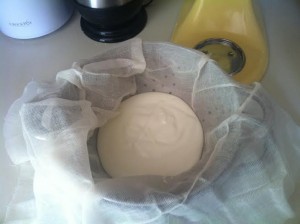 Thanksgiving is over, but the Holidays have just begun! We’re in full swing now and it’s a great time to consider what’s going on in our guts. Yep. Totally serious. I want to talk about your gut. It’s a very important subject. The happy little guys (called flora) that helps us digest and assimilate our food can be damaged during holiday drinking and overeating. If you’re not doing either of these activities, bravo! If so, let’s get some probiotics in do some work!
Thanksgiving is over, but the Holidays have just begun! We’re in full swing now and it’s a great time to consider what’s going on in our guts. Yep. Totally serious. I want to talk about your gut. It’s a very important subject. The happy little guys (called flora) that helps us digest and assimilate our food can be damaged during holiday drinking and overeating. If you’re not doing either of these activities, bravo! If so, let’s get some probiotics in do some work!
This article from the lovely July includes a great recipe to use for the holidays. I don’t advocate using much dairy (because I’m all about high quality or none at all), but read on for a few tips if you’re open to going that route. There are many options for probiotics, get them in any way you can!
Probiotic-rich Cheese recipe for your belly | by: July Westhale
Dairy can be a complicated topic for many health enthusiasts. With commercial farming pumping cows and goats full of harmful, inhuman toxins in order to mass-produce cheese and milk, it’s no wonder that many conscious eaters choose to avoid it. However, there is a responsible, healthy way to eat and enjoy dairy! Introducing: yogurt cheese. Yogurt is one of the most probiotic-rich foods commercially available, with millions of beneficial flora that aid in digestion, boost metabolism, increase positive enzyme-production, and help ensure overall gut health. With homemade yogurt cheese, allowing the yogurt to culture at room temperature for 24-48 hours increases the amount of probiotics, drains the whey, and adds a delicious tartness to the cheese that is similar to that of cream cheese–without all the harmful fat.
The important element to this recipe, as well as to dairy consumption in general, is to make sure that you are using and eating dairy from local, pasture-raised, grass-fed animals. Not only does this guarantee that the animals are treated well, but also means that the nutrients from the grass finds its way into your dairy–something that is lacking in factory-raised animal products. For the recipe I’ve included, I used full-fat yogurt from Strauss Creamery, which is local to me in Northern California, however it is worth investigating if your homebase has a dairy CSA, access to raw milk, or local creamery.
The recipe below is one of the first cheeses I ever made, and remains one of my favorite. The second part of the recipe can be varied using whatever herb-palette. I use a lot of rosemary in my cooking because there’s a shitload in California, growing all up in my backyard. Same with lemons. But use whatever herbs you feel comfortable with—and feel free to branch out and try your own recipes!

SIMPLE HERBED YOGURT CHEESE
You will need:
4 cups plain yogurt
Cheese cloth
Strainer
Large bowl
Olive oil
Herbs of choice
1 tsp salt
2 tbsp fresh rosemary
1 tbsp whole peppercorns
1 tbsp lemon zest
1) To begin, set the strainer on top of the large bowl. Cover the strainer with one layer of cheesecloth, making sure you have enough to double back over your cheese.

2) Pour yogurt directly onto the cheesecloth, making sure to all the whey from the yogurt to drain into the large bowl.
3) Cover yogurt with cheesecloth and allow to sit at room temperature for 24-48 hours, depending on how tart you would like your cheese to be. Allowing it to set at room temperature allows the good bacteria and probiotics in the yogurt to multiply, as well as helps to thicken it.

4) After 24-48 hours passes, check on the cheese, which will have thickened to a mozzarella-consistency. Carefully drop the cheese into a mixing bowl, combining with the salt, and whip until creamy.
5) Scooping the cheese out of the bowl, make small balls of it with your palms and put them in a jar or Tupperware. Cover with zest, rosemary, and peppercorns (or your herbs of choice.
6) Pour in enough olive oil to submerge the cheese and herbs. Cover with a lid and allow to sit in the fridge for 24 hours before serving. Fresh cheese can be kept for up to five days in the fridge, and is delicious with biscuits, bagels (makes an excellent cream cheese substitute), with fruit, or in savory dishes. Enjoy!
* BONUS: when your cheese is done, you can use the herbed olive oil to make garlic bread, marinate meat, or dress salads!

Please be sure to leave a comment below with any questions you may have. Also! Share this recipe with anyone and everyone you know that wants to feel amazing after the holidays! Yes, a happy gut is happy body, and a happy body is good for everyone. Let everyone know 😉 We’d be so so appreciative if you’d share this info. Happy guts for all!
